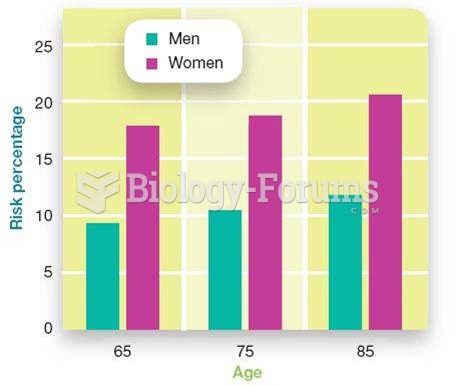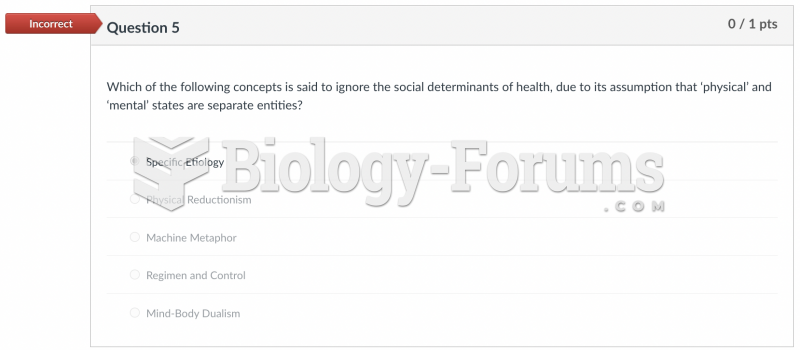Answer to Question 1
A, C, D
Physical activity is modifiable; patients can begin an exercise program at any time. Nutrition is also a modifiable health risk behavior; patients have the ability to increase or decrease intake, depending on their weight and nutritional status. Tobacco use is also a modifiable behavior; pa-tients can participate in a smoking cessation program or use other assistance to stop smoking.
Answer to Question 2
A, B, D, F
An older adult with myasthenia gravis has a chronic, progressive disorder characterized by mus-cle weakness, especially after exercise. Crises can develop as a myasthenic crisis, characterized by severe, generalized, muscle weakness with life-threatening consequences, or a cholinergic crisis, generally caused by an excessive dose of medication and characterized by excessive salivation and lacrimation, tachycardia, and diarrhea. The nurse recognizes the cognitive function to manage his finances successfully as a potential for self-care of his condition and can use this po-tential ability to plan care in the disability assessment. Living in an adult community implies in-dependent living and some ability to perform self-care activities. Skilled nursing services in the home must be necessary to have Medicare health coverage; therefore if this patient requires as-sistance with activities of daily living, then he must depend on his wife or another resource. Liv-ing with another adult can be an asset. For this man, his wife identifies an area of a needed self-care resource because, although she can be trained to identify deteriorating muscle strength in this man, her ability to manage a crisis effectively is impaired with poor eyesight. Thus, the nurse uses the gap between his cognitive function and the wife's ability to manage a crisis to plan his nursing care.
Walking around the house is not an asset for this man; individuals who have extrapyramidal symptoms from an antipsychotic medication can walk around the house. Walking around the house is probably more indicative of limitations from myasthenia gravis; however, it does not indicate a resource need. The history of peptic ulcer disease is a neutral aspect of this man's dis-ability assessment.







